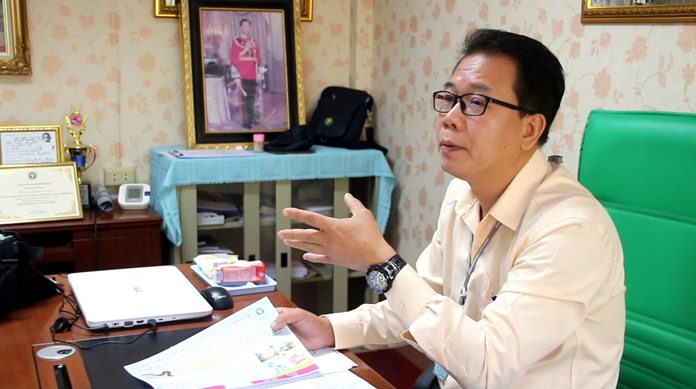
Pattaya-area health officials warned residents to properly cook freshwater shellfish and snails to prevent infection from the potentially fatal Guinea worm.
 Sompol Jithiruengkiat of the Banglamung Health Department confirmed Nov. 22 that the Dracunculiasis, or Guinea, worm had been found in both Banglamung and Bo Win districts in Chonburi. Locally it was found in Takhiantia.
Sompol Jithiruengkiat of the Banglamung Health Department confirmed Nov. 22 that the Dracunculiasis, or Guinea, worm had been found in both Banglamung and Bo Win districts in Chonburi. Locally it was found in Takhiantia.
The parasite causes ailments ranging from headaches, fevers and stomach issues to, in rare cases, death. However, the worm is harmless if the food or water it lives in is properly and thoroughly cooked, he said.
Information about the worm has been forwarded to all local hospitals and about 1,000 community health volunteers.
Guinea worm larvae live in fresh water. When people drink from contaminated water sources, or eat undercooked snails and shellfish from those sources, they can become infected with the parasite.
The larvae turn into worms that can grow to be up to a meter long. After about a year, the worm creates a blister, typically on the legs or feet, for its slow and painful exit. When the worm first erupts, the person suffers a burning sensation and often seeks comfort by submerging the wound in a lake or a stream. The worm takes this opportunity to release a cloud of tens of thousands of larvae into the water. Other people end up drinking that larvae-laden water, which starts the cycle all over again.
It can eventually spread out Angiostrongylus cantonensis which is a parasitic nematode that causes angiostrongyliasis, the most common cause of eosinophilic meningitis.





